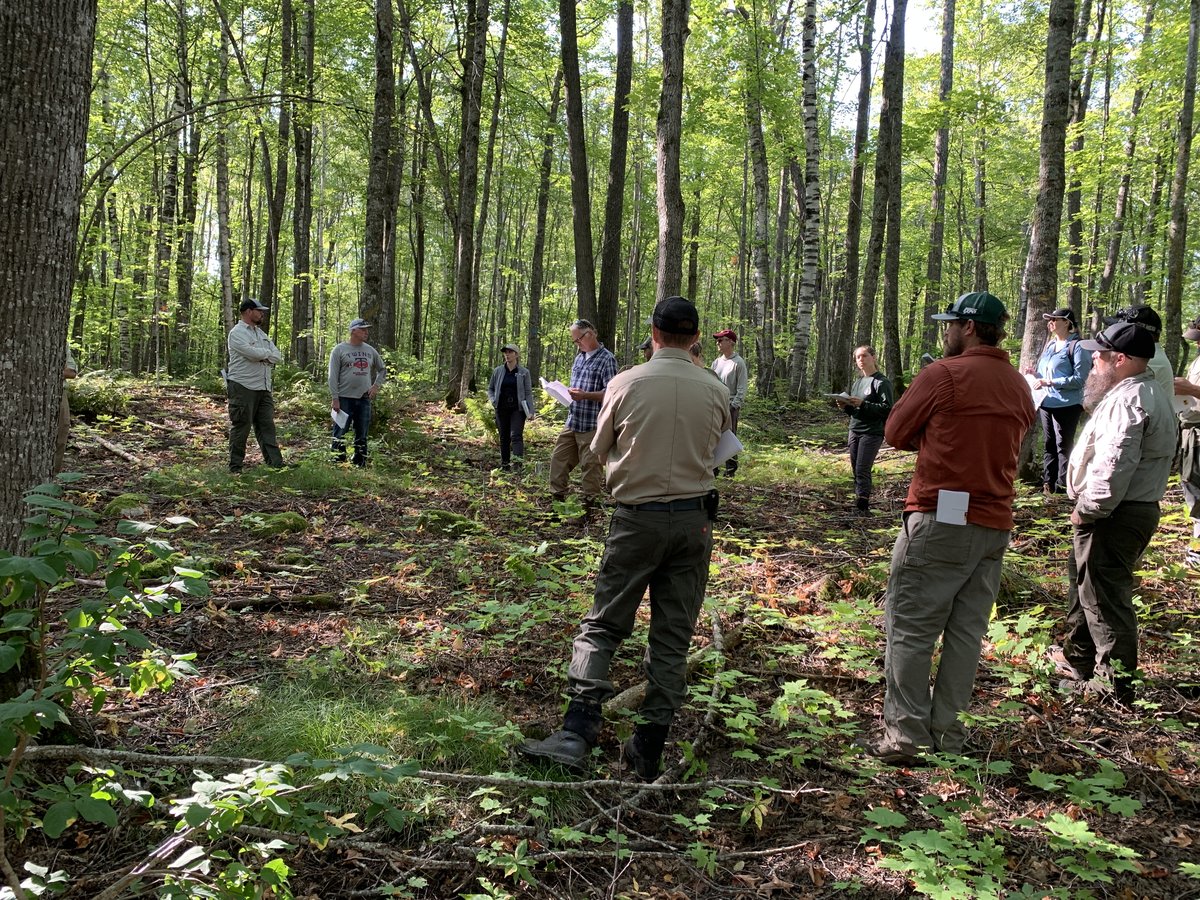2022 Year in Review for the Cloquet Forestry Center & Hubachek Wilderness Research Center
From the Director’s Desk
Happy New Year folks! What a year 2022 turned out to be; in many ways it was our first ‘normal’ year since the Covid pandemic began. I am happy to say that this year we were rewarded with groups returning to both CFC and HWRC. Clearly people and organizations value the learning potential that face-to-face educational opportunities provide. As we transition out of the pandemic, we have welcomed new staff (Chad Korby – CFC Buildings and Grounds and Lane Moser – SFEC) and initiated new projects (Feature Story) and we hope that both will be around for a long time to come.
If you read the local newspapers you have probably heard in the past year that the University of Minnesota and Fond du Lac Band of Lake Superior Ojibwe are in discussions about how the land upon which the CFC exists was transferred to the University. I am not a part of those discussions as they involve people at much higher levels of the University. Meanwhile, we continue to look for opportunities to work with, and support, researchers and educators from Fond du Lac, the University of Minnesota, and other entities to advance diverse scientific and cultural aspects of natural resource management.
Finally we are also here as part of the local community. As you read through this latest version of View From the Woods, realize these updates are just some of the highlights for the year – it is impossible to include everything we have accomplished or put effort into during the past year. So, the next time you are in the area stop by and see what we are up to or take a quiet walk in the woods and rekindle your appreciation for the natural world.
Sincerely,
Andrew David
Director, Cloquet Forestry Center, Hubachek Wilderness Research Center
Collaborative Prescribed Fire
Fire was on the ground and smoke in the air last May as a diverse mix of fire practitioners came together on two separate days to support fire restoration efforts at CFC. Roughly 75 acres of mixed pine woodlands received initial fire treatments, part of a phased effort to return fire as an ecological and cultural process to University lands on the Fond du Lac Reservation. The prescribed fire effort is an ongoing collaboration between the Fond du Lac Band of Lake Superior Chippewa, the Bureau of Indian Affairs (BIA), and the U of M along with partners from The Nature Conservancy and Forest Stewards Guild. These burns are the first time the BIA Minnesota Agency has officially implemented burns on ancestral lands that are not tribally managed
The CFC prescribed burns are an important step in acknowledging the important role of Indigenous communities in stewarding the forest lands of Minnesota – past, present, future. This shared work has begun a new chapter that embraces the role of Indigenous knowledge and the ancient traditional cultural practice of planned fire in shaping the forest lands that comprise the CFC. Fond du Lac community memory and the tree-ring fire history record tell us that fire has largely been missing from this landscape since U of M acquisition in 1910.
Each planned fire effort at CFC provides an opportunity to engage with the Fond du Lac Band and the general public in ecological and cultural conversations on forest stewardship. The ongoing process of planning, implementing, and monitoring new prescribed burns encourages cross-cultural relationship building and integrates Indigenous and non-Indigenous perspectives of forest stewardship. Learn more about these efforts from a long-form story and short video here.
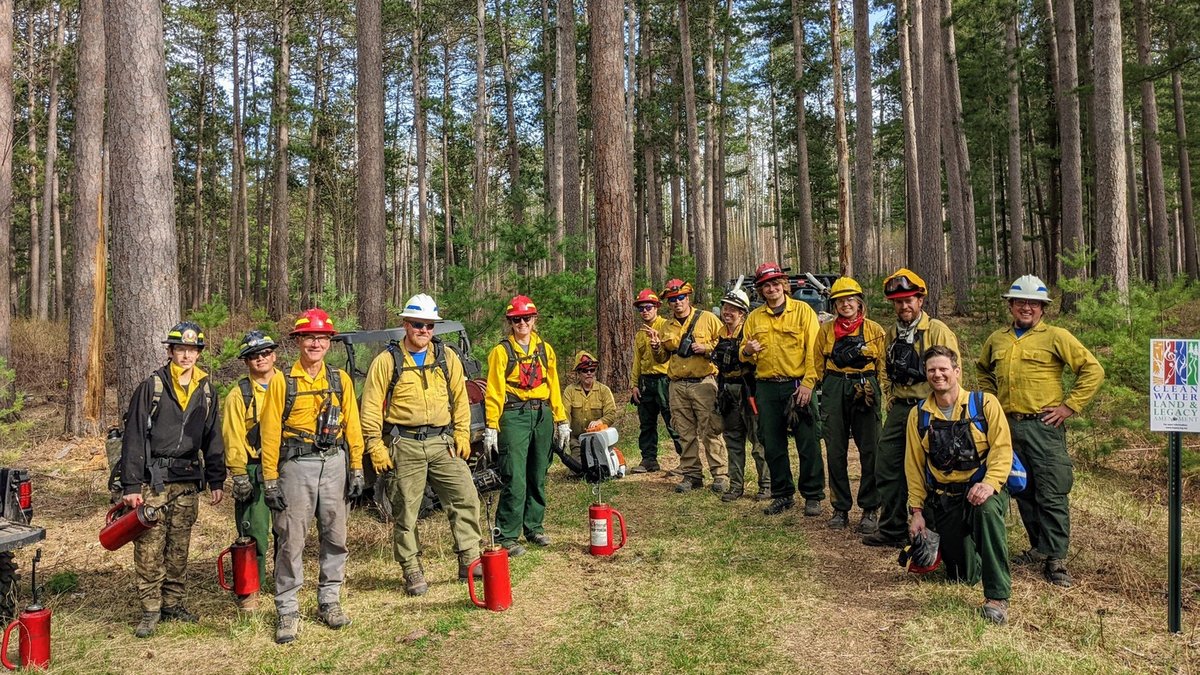
2022 Highlights by Program
CFC Facilities
The Buildings and Grounds crew had another busy year making multiple improvements to the campus. Some of these projects included: painting all five student cabins, four new building roofs, a new dock providing access to Otter Creek, new kiosk at the round-about entrance, and several renovations to the 100 year old Forest Management building including removal of the old chimney, foundation reinforcement, roof reframing and shingling.
We welcomed Chad Korby in May as a new member to the Buildings and Grounds staff. He has been a great addition to our team and has filled a very necessary position as the CFC has seen a significant increase in facilities and lodging use this past year.
For all you Nordic ski enthusiasts, we purchased a new trail groomer/track setter. We will continue to provide groomed classic cross-country ski trails in 2023 as time permits. Trail information will be available at the kiosk next to the visitor parking lot and in the north vestibule of the Classroom Administration Building.
In addition to the UMN Forest Resources spring and summer sessions we host each year, we also hosted 27 sophomore forestry students and instructors from Iowa State University. They stayed 2 weeks on-site spending most of their time out on the CFC forest gaining experiential learning.
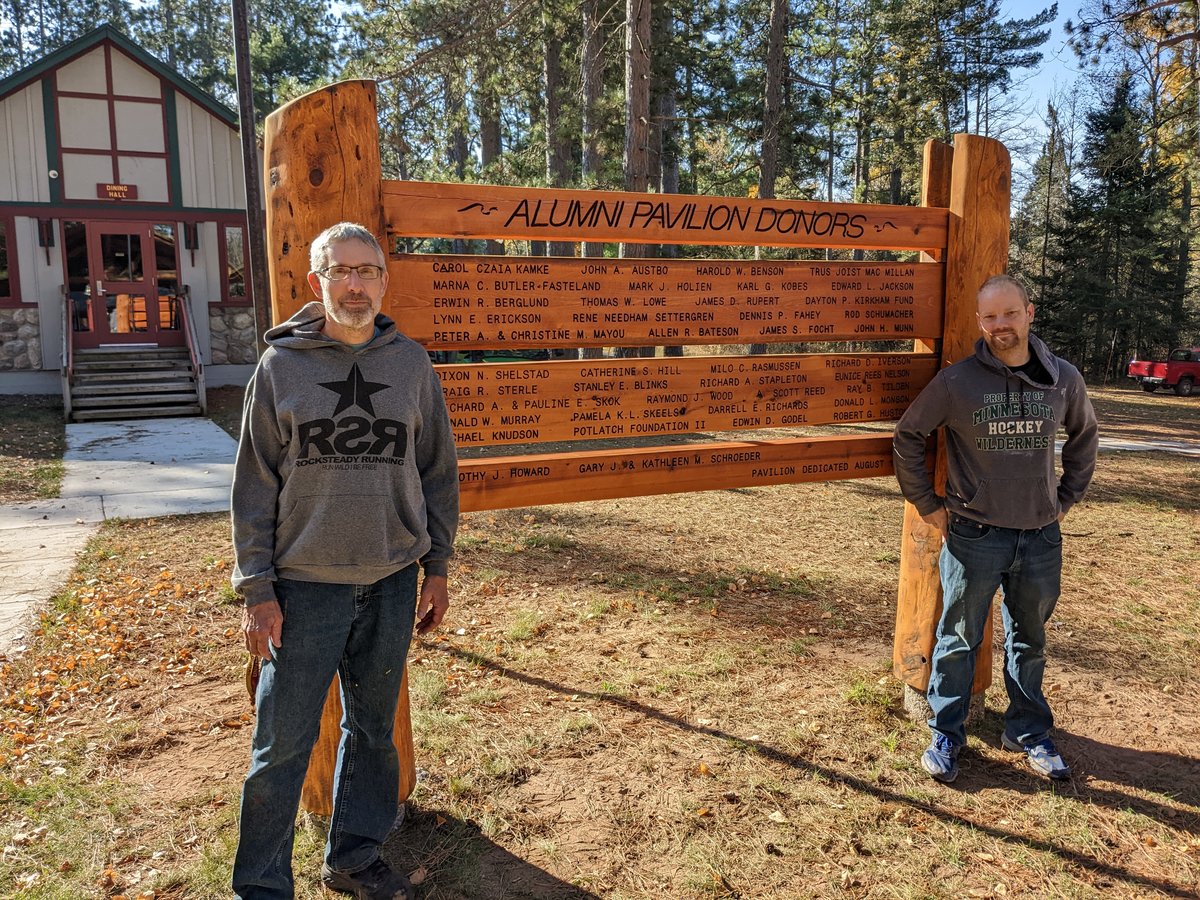
Forest Management & Research
While continuing to do our work as stewards of the UMN Experimental Forests landbase and data resources in 2022, I have been struck that nearly everything we do with our work is tied into relationship development: relationships between us and the land, facilitating relationships between researchers, educators, and students and the land, and between us and our human collaborators. This reflects a continued rescaling of my view of humans as part of ecological communities rather than outside of them or in control of them. As I work with the land and ecological communities we call the experimental forests, I continue to more fully understand how much of what happens is not ever fully within my control. At best, I am an influencing factor in dialogue with other community members; more often than not, I’m an observer.
Working with fire has been a great learning experience on the relationship development front. We put a lot of work into developing both relationships with experienced collaborators and a prescribed burn plan that outlines the administrative and biophysical requirements of having a high likelihood of restoring fire on the ground to have it do its work. The years of experience our partners brought to the table in regards to burn unit preparation, ignition techniques, and equipment increases the likelihood of successful outcomes. But again, these established a likelihood rather than a guarantee that it would go exactly as planned. Once the burn window was open, permits were signed, and human partners were on site, our role was to be respectful igniters that relied on the fire to dance its way through the understory. We hoped the fire would find and consume the material that we planned for but we have to respect that the fire will burn what it is going to burn. Throughout the process we were actively giving up the perception that we were fully in control. Instead, there was an interplaying dialogue with fire where we’d put fire on the ground, step back to observe, and adjust our techniques based on fire behavior. And as dialogue and spending time together continues, the relationship develops. Relationship development requires dialogue and time together, whether with fire or other human and non-human community members, which is why it is becoming the best way for me to describe our land stewardship.
Research projects across the landbase continue to be in relationship with the land through targeted question asking. Our researchers are asking about how our forests are and will likely respond to climate change; how soil and trees respond to the application of biochar; the relationships between insects, fungi, and tree species; how regional climate patterns influence conifer cone and seed development; how wildlife, such as wolves, american fisher, ruffed grouse, songbirds, and bobcats are moving about and interacting with the land; and how designed moments encourage people to take notice of their surroundings. Outside of research, many other new and continuing teaching and demonstration projects relied on the experimental forest landbase.
The annual project record check in process that we initiated in 2020 continues to help us be good stewards of the land and data resources. In the 2021 check-in, we reached out to 88 projects and learned that five had been completed and the rest would remain open for further work. We are reaching out to around 100 projects this year to get status updates.
I encourage you to continue to think about how you are engaging with the communities you are a member of – human and more-than-human – and to always lead with the respect and gratitude that you wish to receive. Often, I find that it is more important to consider what we’re willing to put into the relationship than what we’ll get out of it.
Kyle Gill, UMN Forester and Research Coordinator

Hubachek Wilderness Research Center (HWRC)
After 2021’s drought and fires, in 2022 Hubachek Wilderness Research Center (HWRC) was fortunate to sit in a weather pattern of frequent small precipitation events. These provided plenty of snow for spring runoff to the lakes and groundwater recharge, and mitigated fire danger through the growing season. Forest trees were especially productive this spring. Aspen seed “fluff” piled up like snow in June. Large-leaf asters bloomed in profusion in late summer where we normally see only leaves. Winter 2021-2022 was one of the windiest on record. The windier conditions continued through the summer, generating an overwhelming glut of wind-triggered images on our wildlife camera traps.
Along with the phenological record the cameras captured, we discovered a lot of otter activity around and between Fall and Browns Lakes. Gray foxes are back after a few years absence. Following 2019’s pack split and shifting wolf dynamics, there appears to be a new wolf pack including HWRC in its territory. A black bear gave birth to three cubs in the winter: quite impressive after the bear food shortage of 2021. All three cubs looked fat and healthy this fall. Fourteen mammal species of the boreal transitional forest make regular appearances in camera trap images. Birds occasionally show up too.
In June, the CFANS’ Research and Outreach Center network conducted statewide invasive species workshops, with HWRC hosting the event locally.
Two UMN classes were held at HWRC in the summer. Earth Sciences’ Advanced Field Geology was here for the first time. Forest Resources’ class, Park and Protected Area Management Field Studies returned after a 2-year hiatus. Both classes will return in 2023.
The B4WarmED climate change research project continued the work it began in 2009, adding a paper in the prestigious journal Nature to their growing collection of peer-reviewed publications. This summer they shared their heated plots with a University of Virginia PhD researcher studying the effects of climate change on Entomophaga maimaiga-induced mortality along the spongy moth range front, with strict invasive species precautions in place. The HWRC Lab growth chamber, used historically for plants, was pressed into service growing caterpillars from eggs.
The Monitoring Avian Productivity and Survivorship (MAPS) project was renewed at HWRC, for long term data collection by US Forest service wildlife biologists and citizen scientist volunteers in partnership with the Institute for Bird Populations.
Digital access is now available through the Minnesota Biodiversity Atlas for 4,592 botanical specimens collected mostly in the 1950s by Clifford and Isabel Ahlgren through their work for the Quetico-Superior Wilderness Research Center which eventually became Hubachek Wilderness Research Center. 3908 of those specimens now reside in the Olga Lakela Herbarium at the University of Minnesota-Duluth.
To provide a foundation for future expansion and to support current classes and research on site, several major infrastructure improvement projects are underway at HWRC, including a new well and water system and upgraded electrical system. The Lodge kitchen and bathroom got facelifts and a tricky section of the Lodge roof is now ventilated to mitigate ice dams. In the fall, our rural internet access was significantly improved with the first phase of a fixed wireless high-speed broadband installation which should serve the site well until a University-preferred wired fiber option is accessible. HWRC is now on the UMN network!
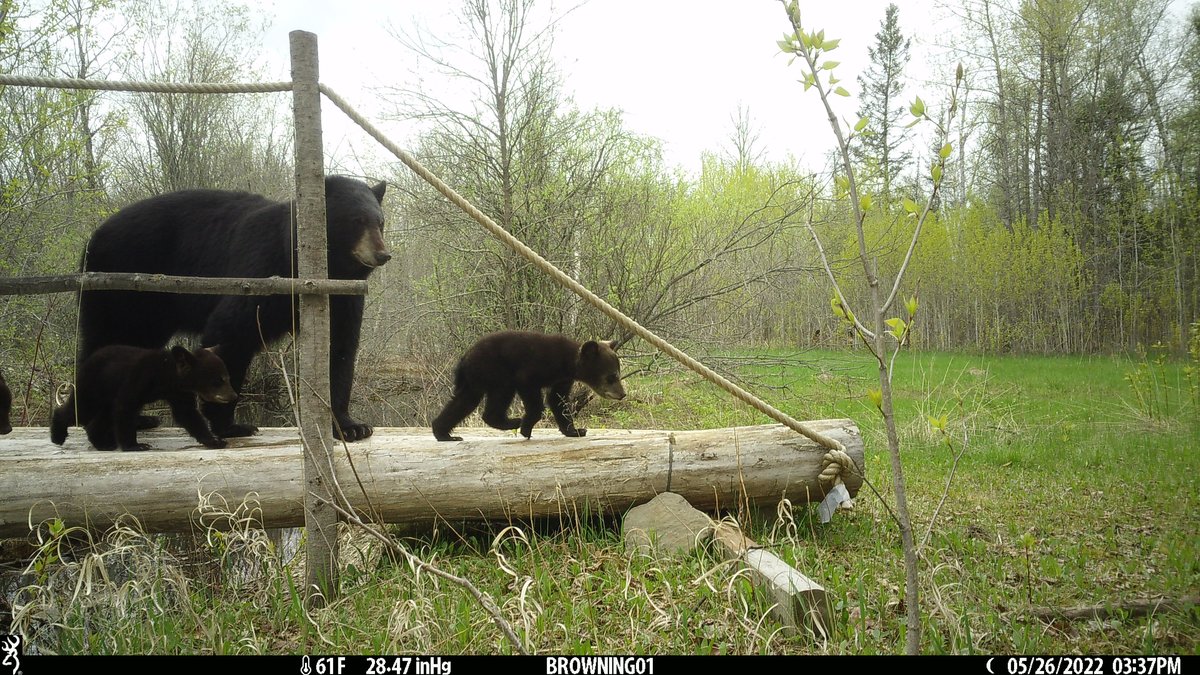
Minnesota Tree Improvement Cooperative (MTIC)
The MTIC is in a period of transition. It took over half a year to review and assess the vacant Tree Specialist position and receive permission to fill it. Hopefully the position will be filled early in 2023 as there is a great deal of interest in planting and promoting various hardwood species in a warming climate. In the meantime, Matthew Picklo is a new graduate student working with the second-generation spruce population to investigate metabolomic signatures associated with drought tolerance in white spruce. He was recently awarded a one-year CHS fellowship starting in 2023 for his research project.
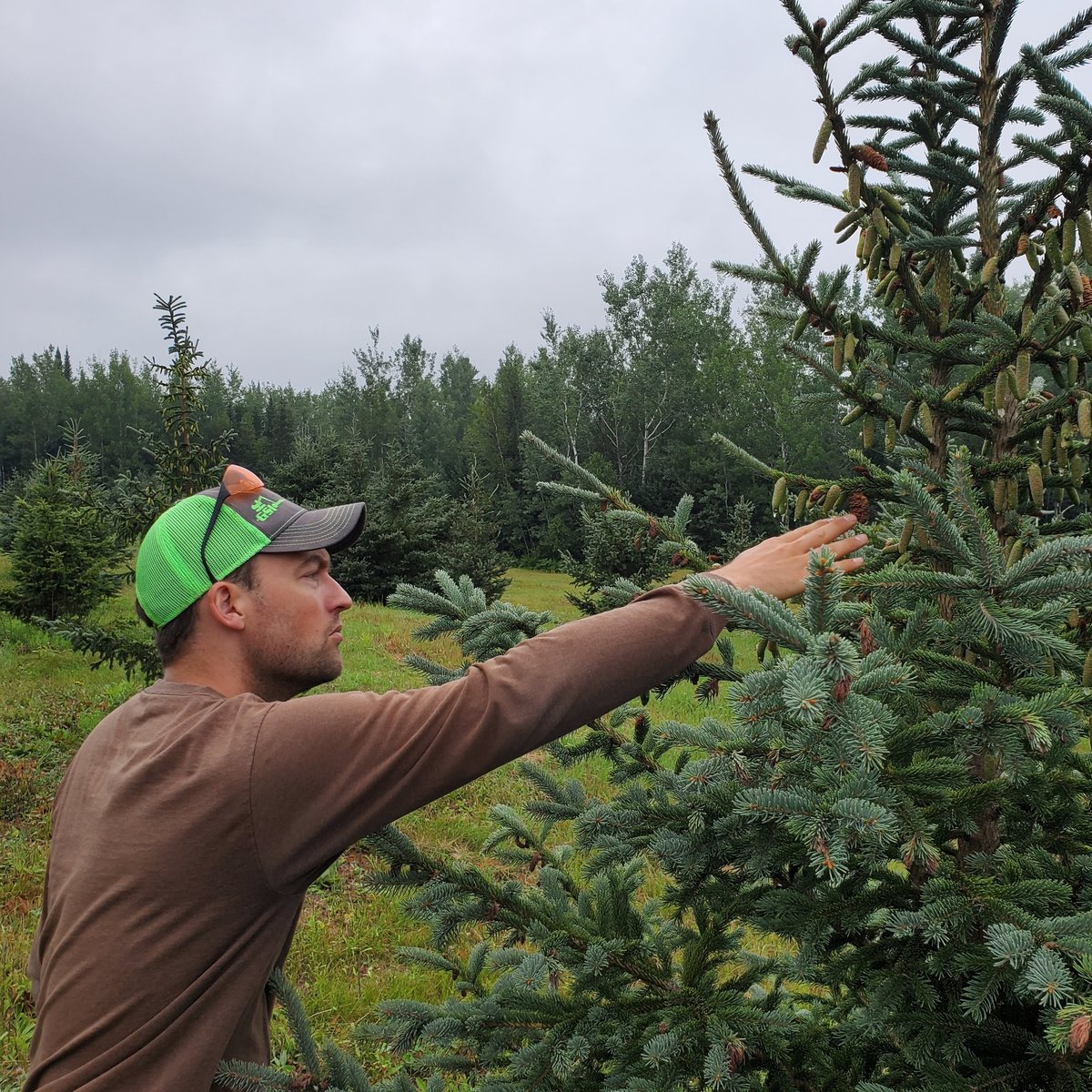
Sustainable Forests Education Cooperative (SFEC)
For the people who manage northern Minnesota forests, the Cloquet Forestry Center is the front door to the University of Minnesota. Driven by the practical learning needs of our 48 member organizations and their staff, the CFC’s Sustainable Forests Education Cooperative connects University of Minnesota researchers, Extension educators, landowners, and land managers to exchange knowledge that informs land management practice.
A highlight of this year’s SFEC calendar was the early December 2022 Summit on Natural Disturbance and Wildlife Habitat. The Summit focused on the roles of natural disturbance in shaping our local forest ecosystems. Forests are shaped by a variety of different kinds of disturbance, including wind, fire, insects, disease, and saw. In fact, although we don’t often think about it, many forest ecosystems around the CFC were shaped over millennia by fire. The influence of fire is so strong that most forests on the CFC are fire-dependent ecosystems. In addition to its ecological importance, fire is deeply intertwined with the identity and spirituality of Anishinaabe people, on whose lands we reside. Focusing on wind, fire, and timber harvesting as disturbance agents, the summit explored ways that land managers can both reintroduce “good fire” and simulate the effects of other historical disturbances.
At SFEC we believe that the best environmental solutions involve people and nature working together to not only meet our current needs, but to maintain the capacity of social and ecological systems to meet our needs in the future. As an educational co-operative, we are grateful for the community that sustains us. Our members include county land departments, soil and water conservation districts, wood products companies, tribal natural resource agencies, state agencies, national forests, and others. The Cloquet Forestry Center is the perfect place to bring this community together, along with UMN faculty and Extension specialists, to learn from one another.
